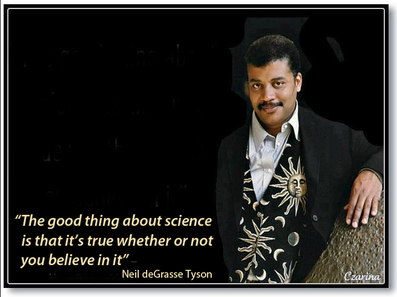|
|
As breeders use inbreeding to improve consistency in their litters, they are also increasing their ability to improve traits through selective breeding.
|
|
|
Let's take a simple example. If you flip a fair coin, you will get heads half the time and tails half the time. But if you flip a coin 10 times you are unlikely to get 5 heads and 5 tails. We don't see this as a violation of some grand design because we think we understand chance. Yet if you start flipping a coin and get 97 heads in a row, your brain might be screaming at you to predict the next toss will be tails. But if you have had a course in probability or statistics, you will know that even after 97 heads in a row, you are not more likely to get tails than on any other toss.
|
Henry David Thoreau said something that I really like because it's the perspective I bring to the way I think about science:
|
To know that we know what we know, and that we do not know what we do not know, that is true knowledge.
|
Breeders understand the advantages of inbreeding for consistency, but many fail to see that as their dogs become more and more similar genetically, they are less and less able to change traits through selection. You will hear people say things like "once you lose your fronts, they are hard to get back," or "temperament problems are hard to correct". These are statements about highly polygenic traits; they are influenced by MANY genes, and if the genes for those traits are homozygous in a population, no amount of selective breeding will improve them because you have no variation to select from.
I keep pounding away at the importance of education. Without it, you have no way to know whether the things you "know" are actually true or false. Many people chose "True" in answer to the question, and they probably think they are correct. If they don't know the science, they will continue to believe that.
Every breeding you do is an (expensive) experiment. If the rules you breed by are actually incorrect, it's going to be hard to produce what you want. And you'll also use what you think you know to come up with reasons why things didn't work as expected. Knowing this little bit of information about the relationship between inbreeding and the allelic diversity needed for selection, you should have a different perspective on the process you use to make breeding decisions. In fact, your perspective will change even more if you know more of the rules.
I posed this question because I was curious to see how people would respond. I really didn't expect to see so many votes for both True AND False, or the number of explanations offered that didn't really support the answer. What is clear is that many people did not know the simple fact that would have made this question easy, and worse - they don't know that they don't know. No doubt, many people are basing breeding decisions on "information" that is simply untrue. How effective and efficient can a breeding program be if it is based on incorrect information?
What would you say to these statements: true or false? After you decide, follow the links.
Hybrid vigor does not occur in dogs.
"I know what's in my lines"
Breed only the best to the best and spay/neuter the rest.
Recessive mutations should be removed from the gene pool.
There is quality in a singleton puppy.
The dam is more important than the sire.
Inbreeding does not increase health problems in purebred dogs.
We have to protect genetic purity of breeds with closed stud books.
You will hear all of these statements in discussions about dog breeding. They are all false because they violate simple principles of genetics that are true whether you believe them or not. How can you breed the best possible dogs if you don’t know the rules of the game?
There is no better way to spend some of the time and money you invest in dogs than in your own education. This is why ICB teaches courses. Take them. The COI Bootcamp course is free and you can take it any time. Take the two courses ICB offers in population genetics. Invest in yourself and become a smarter breeder.
Know the things that are true, and know that you don't know what you don't know.
ICB's online courses
*******************
Coming up NEXT -
Managing Genetics for the Future
Class started 1 February 2016
but there's still time to join us!
Sign up now!
***************************************
Visit our Facebook Groups
ICB Institute of Canine Biology
...the latest canine news and research
ICB Breeding for the Future
...the science of dog breeding


